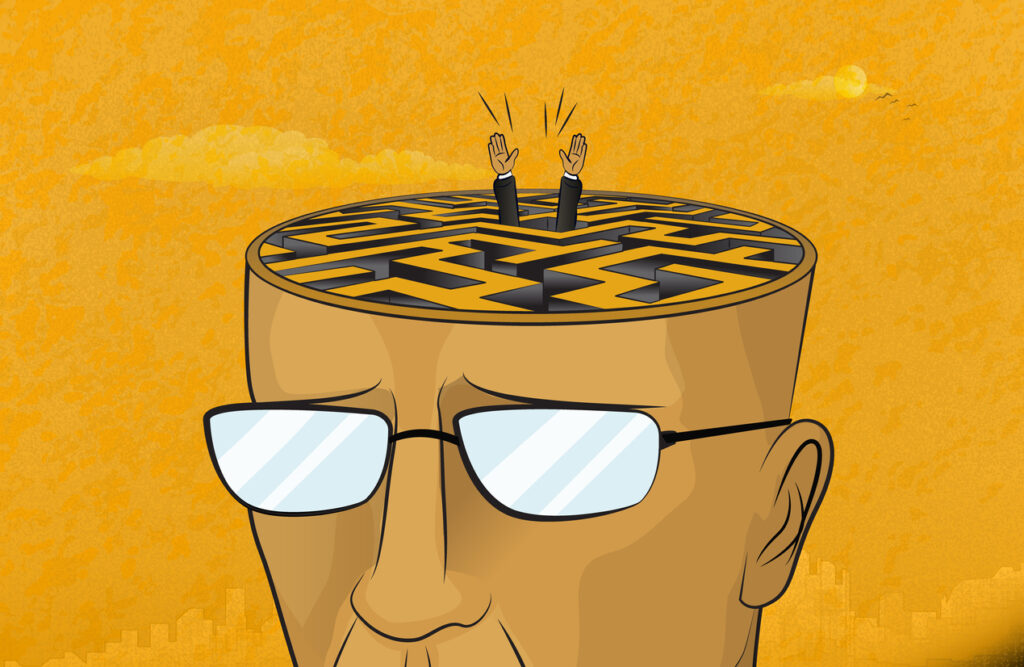While their business interests may differ, well-accomplished business leaders such as Richard Branson of Virgin and Ingvar Kamprad, the founder of IKEA, have one thing in common – they both have Attention Deficit Hyperactivity Disorder (ADHD).
Later life ADHD diagnosis
The condition has traditionally been more commonly recognised in children – with around five per cent of children globally being diagnosed – it’s estimated that 60-70 per cent of ADHD symptoms carry on into adulthood. Precise statistics on ADHD in adults are harder to find, but a recent analysis by the Global Health Epidemiology Reference Group suggests that 2.58 per cent of adults have persistent ADHD, while 6.76 per cent have symptomatic ADHD.
Many ADHD traits are perceived negatively, such as lack of concentration, restlessness and impulsiveness
So, with growing awareness of ADHD and a year-on-year increase in diagnoses, employers need to recognise the value of individuals with the condition, whilst helping them to feel more confident within their roles. Similarly, they need to educate others in the workplace who may find traits associated with ADHD challenging to accommodate.
Indeed, many ADHD traits are perceived negatively, such as lack of concentration, restlessness and impulsiveness. However, research indicates that those with ADHD often possess high levels of creativity, exuberance, emotional expressiveness, interpersonal intuition, ecological consciousness, and leadership skills.
Manage and maximise the benefits of ADHD in the workplace
In the first instance, ADHD sufferers will be aware of the challenges that are presented when working with others. For example, they may find following a set routine very tedious, preferring to have more flexibility in the hours they work. They may find that being tied down to working in a clean, quiet and sterile environment may make them uncomfortable – preferring to adorn their desks with clutter, fidget toys and nick-nacks from home to create a more inspiring workspace.
Playing music may also help those with ADHD to focus on a task better, so headphones could be a useful accessory to avoid disturbing others whilst having a second stimulus to help keep those who have ADHD in their seats. Employers can also accommodate individuals diagnosed with ADHD by offering a range of spaces in office environments, so those with more exuberant and creative traits can move around during the day for example comfy sofas for informal brainstorming sessions or ‘play spaces’ with table football for active thinking opportunities, as well as private booths for concentrated computer time or confidential meetings.
If we consider the differences between those who are more unstructured, spontaneous, intuitive, and adept at thought leadership compared to those who are more structured, diligent, rigorous, thorough and better able to focus on one problem at a time – both ends of this spectrum are needed in a workplace. The key to maximising the benefits of individuals at either end of the scale is to first identify where your team sits on the continuum.
KAI is the world’s foremost measure for problem-solving, teamwork and creativity
Are individuals with ADHD better or worse at problem-solving?
One tool that can be used to identify strengths and understand how different skill sets can be put to good use in the workplace is the Kirton Adaption-Innovation Inventory (KAI). The KAI is the world’s foremost measure for problem-solving, teamwork and creativity. It is widely used by individuals in the business, psychology, sociology and education sectors to understand how employees’ different styles of thinking and doing affect the way they work as a team and come up with ideas.
The KAI doesn’t measure one’s capacity or ability to solve problems, work as a team, or think creatively; rather it measures the way individuals prefer to creatively solve problems. The KAI indicates if individuals are more Adaptive or more Innovative on a continuum. Those who prefer to generate new ideas by the use of the existing context of familiar rules and policies score nearer to the adaptive end of the continuum, and those who prefer to generate new ideas by challenging the existing rules and policies score nearer to the innovative end. It’s important to note that one preference is not better than the other, as it has no relationship with one’s intelligence, learned skills, motivation, or abilities.
Recognising innovation
It has been recognised that those with ADHD tend to score nearer the innovative end of the KAI scale. Research by Jean-Pierre Issa, while studying at the International Center for Studies in Creativity, at Buffalo State College, indicates a relationship between ADHD and ‘creative’ personalities. The study sampled 49 North American adults with an ADHD diagnosis administering various creative personality inventories, including KAI. With respect to KAI, he found that the ADHD group was nearly one standard deviation more innovative than those not diagnosed with ADHD. While these findings are not conclusive, it is the first research-based evidence supporting a relationship.
What this means for employers is that ADHD individuals likely take a more innovative approach to solve problems. It doesn’t make them better or worse than their more adaptive colleagues, but it does mean that they will be more likely to think in ways that are unstructured and unconventional when it comes to creatively solving problems.
More innovative individuals may prefer to approach problems by discussing the challenges and brainstorming wacky solutions
Using KAI, therefore, has the benefit of being able to identify which projects and challenges in the workplace may benefit from this more unbiased approach that is often utilised by individuals with ADHD. It means that business leaders, managers and HR professionals can identify which members of the team are more likely to approach challenges with a fresh perspective and which team members are better suited to managing projects that require a more traditional approach to delivering solutions.
This understanding can help all members of the team to work together more effectively. For example, more innovative individuals may prefer to approach problems by discussing the challenges and brainstorming wacky solutions; and more adaptive individuals may prefer to solve problems in a scheduled meeting, with attention to practicality and process. Once all team members know where they sit on the KAI continuum, it opens opportunities for more collaborative problem-solving to take place.
Interested in this topic? Read Why you should be hiring neurodiverse talent.
[cm_form form_id=’cm_65a14c3f5da64′]






